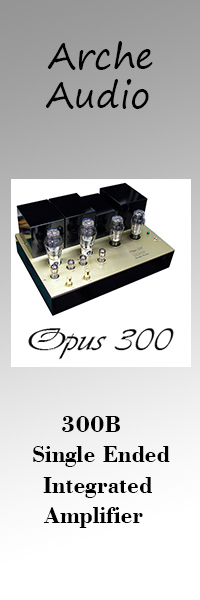Schumann Frequency vs Alpha Waves?
 Many readers would have heard of the product that started it all, the Acoustic Revive RR-77. Acoustic Revive has recently replaced the RR-77 with the RR-777. Appearing physically similar to its predecessor, the RR-777 promises an improved circuit which boasts a generator that is four times more powerful. Both generate a Schumann Frequency pulse, at 7.83 Hz.
Many readers would have heard of the product that started it all, the Acoustic Revive RR-77. Acoustic Revive has recently replaced the RR-77 with the RR-777. Appearing physically similar to its predecessor, the RR-777 promises an improved circuit which boasts a generator that is four times more powerful. Both generate a Schumann Frequency pulse, at 7.83 Hz.Supplied with a switching mode power supply, and a very long DC cable, Acoustic Revive advises that the RR-777 be kept away from other components and be placed at a height of at least 1.5 m. The main unit is made out of plastic, and sports a rocker switch behind, to turn the unit on and off. A single blue LED on the front of the device indicates operation. The LED is bright enough to upset audiophiles used to bat-cave like conditions, but it is not bright enough to be used as a night light !
The light weight of the device makes it perch a bit precariously in high places, and perhaps a bit of blu-tak should be used to secure it down safely.
|
|
| Rear view – DC jack and a rocker switch for power |
The Telos Quantum Acoustics Diffuser on the other hand operates at a higher frequency, at 9.41 Hz (based on unconfirmed information) and is fashioned more like a picture frame. I happened to see its internal circuit board at the local Telos dealer, and much of its area is dominated by its antenna. The Telos has drilled holes to support wall mounting, and includes a screw-on wooden leg to allow it to stand like a table top picture frame.
| Finished nicely in wood trim, just like a photo frame |
| The battery bay at the rear takes in 4 AA batteries. The wooden rod seen at the bottom of the picture screws into a small threaded hole to allow the Telos to balance upright. |
| The PCB of the Alpha Wave |
The supplied switch mode power supply looks similar to the Acoustic Revive supplied model, but operates at 9V DC, instead of the 12V DC used by Acoustic Revive.
The green LED light that indicates operation is near invisible in daylight, and does not call much attention to itself, even in pitch darkness. Uniquely, the Telos allows battery operation via 4 AA batteries that fit into a battery compartment on the rear of the unit. A second red LED light indicates a weak battery. The Telos does not have any charging circuit built in, so the rechargeable battery crowd will need a separate charger.
One criticism against the Telos would be the position of its DC socket. Its location makes the use of a right angled DC plug mandatory. Users with aspirations of using upgraded power supplies may need to do a little bit more leg work to find a suitable plug. On the feature count, the Telos edges ahead of the RR-777 given its battery option.
Officially, no placement tips are given, although the local dealer advises that the Telos is not particularly sensitive to placement. Nevertheless, for comparison purposes, both were placed behind my left speaker, perched at a height of approximately 1.5 m.
| A group shot shows the relative size of the two unit on test. |
Sound Quality
Both units were tested after a few weeks of usage, and were initially used with their stock power supplies.
The RR-777 is characterised by a focused and detailed presentation. Midrange images are presented in a pin-point fashion, with detailed texture and decay. Both voices and instruments have relatively small image sizes. This quality is applied evenly to high frequencies, giving systems a slight lift and extension there, with enhanced air and edge definition.
Flute solos have noticeably more air, while finger work and sliding on acoustic guitar strings are more distinct and precise.
Soundstaging is slightly distant, with a movement of the soundstage at least a few rows backwards, helping to create the illusion of depth.
Bass is relatively unaffected by the RR-777, although it would appear that there is a very slight reduction in impact and speed.
Tonally, the RR-777 shifts systems towards a brighter and more brilliant presentation. I noticed on the downside that sibilance is worse on the usual problematic tracks.
Like its predecessor, the RR-777 can be tuned via its power supply. The stock switching unit is bright and crisp. Using a 2A linear power supply changed the RR-777 drastically, making its balance closer to that of the Telos. Besides a heft and roundness to bass notes, the linear power supply resulted in a richer and bigger voice, with a slight forward shift in the soundstage. Unfortunately, there was a slight loss of high frequency extension. Hooking up a 3A switched mode power supply which happened to be lying around, the RR-777 took on a middle ground between the stock switcher and the linear power supply.
Readers would need to consider whether the power supplies were directly affecting the performance of the unit, affecting the power line via radiated noise, or a combination of both. To minimise variables, the stock switching power supply was left plugged in at all times, while the alternative power supplies were being used.
Next, we take a look at the Telos. Like the RR-777, the Telos enhances acoustic space, and results in a more detailed and textured presentation of voices and instrument. The Telos presents the human voice with a richer and smoother tone. Image sizes are larger, and similar to the RR-777, the soundstage is more distant compared to stock.
High frequencies are extended, although this is done in a natural and subtle way.
Dynamically, the Telos has more authority, with an increase in mid-bass bloom and low bass extension. Timing wise, it gives music more PRAT.
Evaluations of the Telos with different power sources would be more difficult, given that 9V power supplies are not as common. However, I recently procured a 9V Kingrex PSU Mk II to explore power supply improvements. Like the RR-777, the Telos proved sensitive to the power supply. The Kingrex added additional weight and slam over the stock power unit. However, I found that the effect was a little bit overpowering and preferred the faster and snappier sound of the stock power supply.
Comparisons
Either of the units above used in isolation offer a significant improvement in sound quality. As a matter of tweaks, the change is as significant as changing your source or amplifier. This would apply even in high-end, and highly tweaked setups. The rationale for the efficacy is difficult to comprehend. Should a small device that sits outside the signal chain make such a difference ?
Unlike most tweaks and modifications, these units presumably work on the listener rather than the system hardware. A quick internet search on the Schumann Resonance and Alpha Waves will yield many pages of interesting reading.
Since these units work on the listener, the effect on each person varies. I demonstrated both units to five other audiophiles. The first person had significantly different observations (e.g. I would perceive increased bass, or a richer sound while he would hear the opposite thing). He also had physical sensitivity to both units, with an uncomfortable feeling of pressure in his head whenever either units were used. Two other persons did not feel any discomfort and their observations on the differences were quite consistent with mine. Personally, I did feel a slight tingling sensation in my fingers with either unit in operation, but the feeling was not uncomfortable. Two of the other listeners did not feel that the differences were discernible or significant.
Both units increased the feeling of spaciousness and improved the depth and width of the soundstage. They were also consistent in increasing resolution, extension and decay.
The main difference between the two units are in their overall tonal balance and presentation. The Telos is warmer and more laidback. It has more mid-bass bloom, not unlike a good tube amp. The RR-777 is brighter and more analytical, especially with its stock power supply.
In my system and given my musical taste, I preferred the Telos. I can well imagine that some may prefer the tone and presentation of the RR-777.
I tried both the Telos and RR-777 simultaneously. Interestingly, both units are able to co-existing peacefully, with the result being a combination of strengths of both. However, over the long term, I felt that the midrange coherence was lost – an expected result since this was an area of divergence between the two units.
Conclusions
System matching is everything, and your choice of either one would depend on the result that you are trying to achieve. I was suitably impressed with both units and can highly recommend both. However, given its dependency on the listener, you should try before you buy.


Eric also publishes his own blogspot out of Singapore entitled Eric’s Hifi Blogs (http://singaporehifi.blogspot.com/)
Product Information:
Acoustic Revive RR-777, $650 USD
acoustic-revive.com
US distributor, Simply Hifi Ltd.
Mooresville, NC 28115
www.simplyhifi.com
(704) 230 0029
Telos Quantum Acoustics Diffusor, $800 USD
Wynn Audio
69-315 Village Green Sq.
Scarborough, ON, M1S0L2
Canada
Email: info@wynnaudio.com






Be the first to comment on: Clash of the Titans